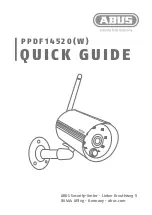
V1.02
Thom Hogan’s Complete Guide to the Nikon D300
Page 261
loss of data (on slide film, clear acetate; in digital, bits maxed
out at the highest possible value).
Nikon’s DSLR designs, to date, all have some tendency to
preserve highlight detail with their matrix metering system.
The D300 does, too. In digital, when more light photons hit
the sensor than it can hold (i.e. overexposure), no additional
data is recorded; the photodiode and the electron well that
holds the electrons it produces is said to be saturated. This is
like a brick wall for exposure: any truly overexposed area will
simply record as the maximum data value (255,255,255 for 8-
bit data; 4095,4095,4095 for 12-bit data; and
16383,16383,16383 for 14-bit data). This is called “blowing
out the highlights.” With inkjet printer technologies, no ink is
put down on the paper in areas at the maximum data value,
making for a visible discontinuity if you look carefully
84
.
Overexposure is therefore bad news.
The matrix metering system in the D300 has a tendency to
produce images that don’t blow out highlights, though this
sometimes makes them look a bit dull and underexposed. The
simplest way to deal with such images is to change the
exposure linearity using a Curve in Photoshop. Another way is
to alter the camera’s settings; in particular, you can use a
Custom Curve in your Picture Control (see “Picture Controls”
on page <334>). Yet another method is to use
Active D-
Lighting
(see “Active D-Lighting” on page <310>).
Unfortunately, underexposing on any DSLR has the tendency
to increase noise when you later adjust the exposure. Thus,
you’re often put into the situation of needing to choose
between preserving highlight detail or revealing noise. I’ll
discuss this again later in the eBook, but the short answer:
almost always you should preserve the highlight detail, even if
it’ll eventually mean that you have to sacrifice shadow detail.
84
Some recent printers attempt to fill in these non-printing areas with a clear coating
so that the entire surface of the paper has something on it, though. This avoids the
“gloss differential” created by the different sheen of the ink versus uninked paper.
















































